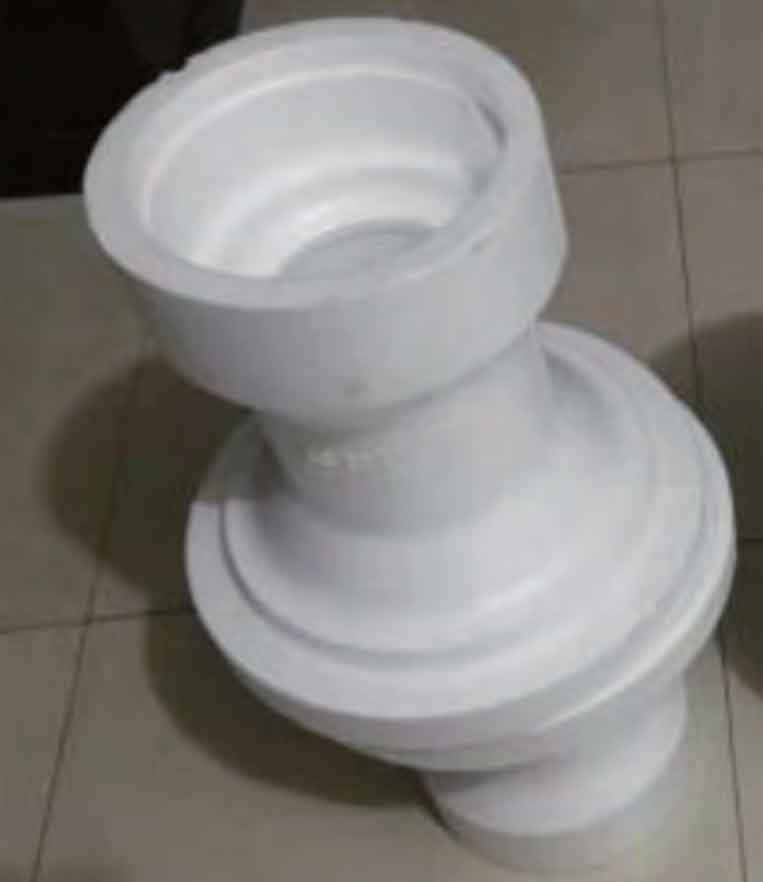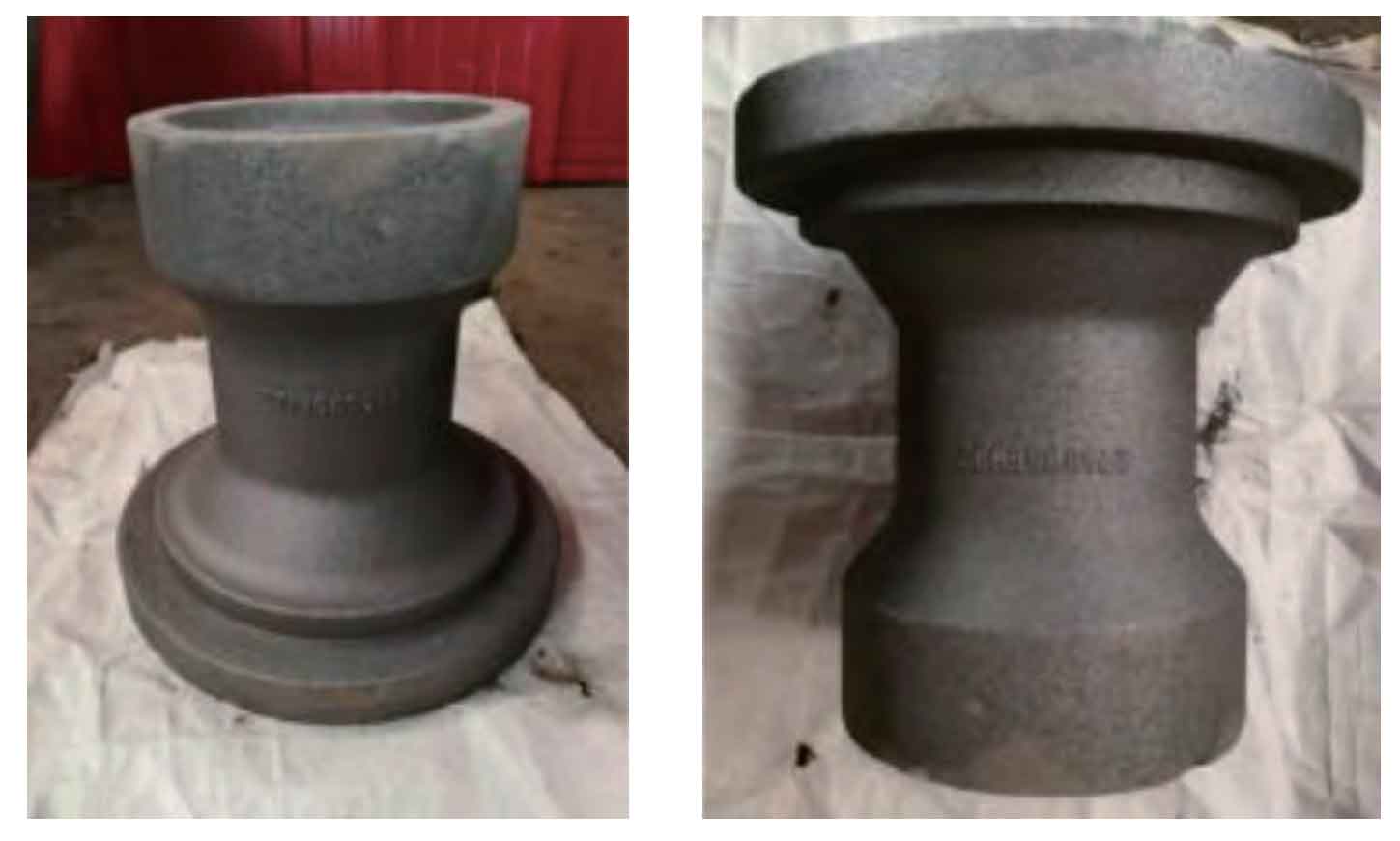1. EPS foaming white mold
EPS (polystyrene foam) has good mold filling performance, good surface quality, small investment in pre test mold, and fast development cycle. According to the shell structure of the output shaft and its appearance quality requirements, EPS plastic foam white mold is adopted to develop the foaming mold. Considering the subsequent machining quality requirements, the EPS white mold is selected as the overall structure, as shown in Figure 1.
2. White mold modification, setting slag collecting ladle, bonding pouring and feeding system
For EPS white mold made of foaming, if there are surface defects such as pits, lack of meat or bumps, the surface shall be modified with modification paste or modifier.
Considering the influence of EPC structure on sand flow filling, the top injection process of two open upward and symmetrical inner gates is designed, and 6 ~ 8 slag collecting bags are arranged at the top of the highest position on both sides of the inner gate. After the process is determined, the bonding pouring feeding system forms a white mold sample, and the white mold sample of the output shaft housing is shown in Figure 2.
3. Coating dipping and drying
After the completion of the white mold, dip or brush the coating, or “dip and brush + apply” the coating. Coating properties and its dipping and drying will directly affect the surface quality of EPC Castings. Dip and brush the water-based composite quartz silica sand powder coating twice, and dry it naturally after coating each time or dry it at the temperature of 40 ~ 55 ℃ for 8 ~ 10h. During the drying process, the white mold shall be placed stably to prevent its deformation.
4. Sand filling, packing, molding and negative pressure pouring
The whole dried sample of the dipped paint shall be buried in the pearl sand, and the bottom sand shall be laid, vibrated and leveled. The vertical support shall be firm. When adding sand, especially for the inner cavity, dead corner and shadow parts that are not easy to be compacted under negative pressure, it shall be filled in place. Add sand to be flush with the top of the sand box, and compact with three-dimensional vibration at the same time. Cover the upper opening of the sand box with plastic film, and cover it with a certain thickness of dry sand to protect the plastic film. Place the sand box with sand filling molding in the pouring area, connect the vacuum pipe, open the negative pressure valve, and tighten the negative pressure; When the negative pressure and vacuum degree reach 0.045 ~ 0.06mpa, pour the molten metal of nodular cast iron. 10 ~ 15min after pouring, close the negative pressure and remove the vacuum.
5. Cleaning
The EPC Castings shall be kept in the sand box for 2 ~ 2.5h. After the EPC Castings are cooled to 200 ℃, the sand shall be removed and unpacked. After the EPC Castings are cooled, the gating system and slag collecting bag shall be removed, and then the surface shall be cleaned by shot blasting or sand blasting, and then the complete EPC Castings shall be further cleaned. The EPC Castings of output shaft shell are shown in Fig. 3.



